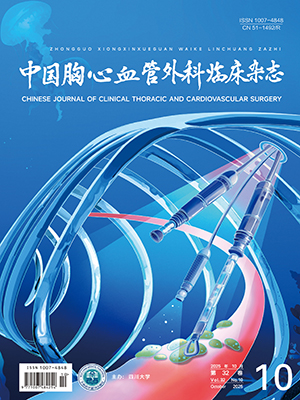Abstract: Objective To introduce the early experience of using vacuum-assisted closure (VAC) in the treatment of wound dehiscence after thoracic and cardiovascular surgery. Methods This report retrospective1y analyzed the clinical data of 12 patients who underwent VAC in the treatment of wound dehiscence after thoracic and cardiovascular surgery in the Affiliated Hospital of the Logistics University of CAPF between October 2010 and October 2011. There were 7 male patients and 5 female patients with their mean age of 64.3 years (ranging from 39 to 80 years). All patients underwent operation via median sternotomy or lateral thoracic incision. All the wound dehiscence was deep to sternum or rib. After debridement of necrotic tissue, the wound surfaces were covered with VAC sponges, and intermittent negative pressure therapy was used. The VAC sponges were changed every 7-10 days. Results All the patients underwent an average of 2 times to change the VAC sponges during VAC treatment. After VAC treatment, the edema around the surgical wounds gradually disappeared, and the granulation tissue was refreshed. The overall conditions of all the patients were improved. The patients could leave their bed, walk in the ward, and look after themselves. Antibiotic treatment was no longer used. The residents checked up the negative pressure system every day to see whether it worked well. The patients were no longer afraid of changing dressing and pain every day. All the patients were healed, discharged from the hospital and followed up at outpatient department for a mean time of 7 months. Their wounds all healed well during follow-up. Conclusion VACsystem is easy to use. It can facilitate the healing of wound dehiscence quickly, decrease the inflammatory reaction of local wound and the body, and shorten the rehabilitation time. It’s also helpful to reduce the residents’ work load. It is recommended in the treatment of wound dehiscence after thoracic and cardiovascular surgery.
Citation: YU Hongquan,YANG Xueyong,LI Bing,et al.. Vacuum-assisted Closure in the Treatment of Wound Dehiscence after Thoracic and Cardiovascular Surgery. Chinese Journal of Clinical Thoracic and Cardiovascular Surgery, 2012, 19(3): 280-282. doi: Copy
Copyright © the editorial department of Chinese Journal of Clinical Thoracic and Cardiovascular Surgery of West China Medical Publisher. All rights reserved




